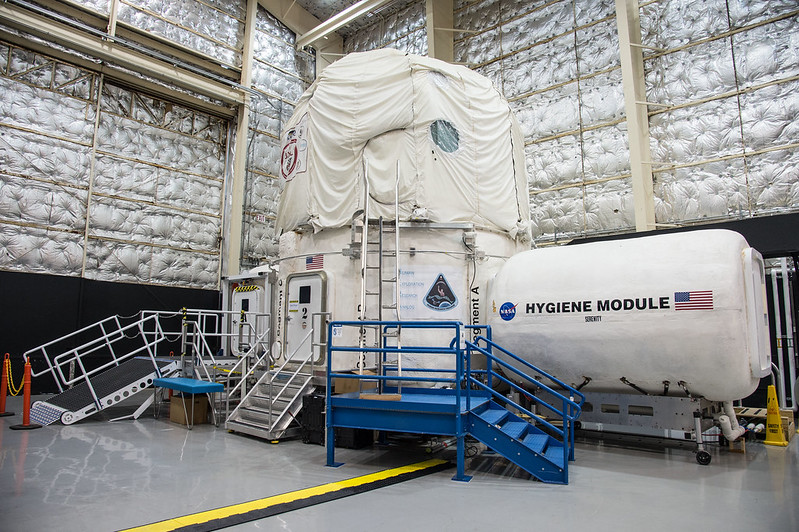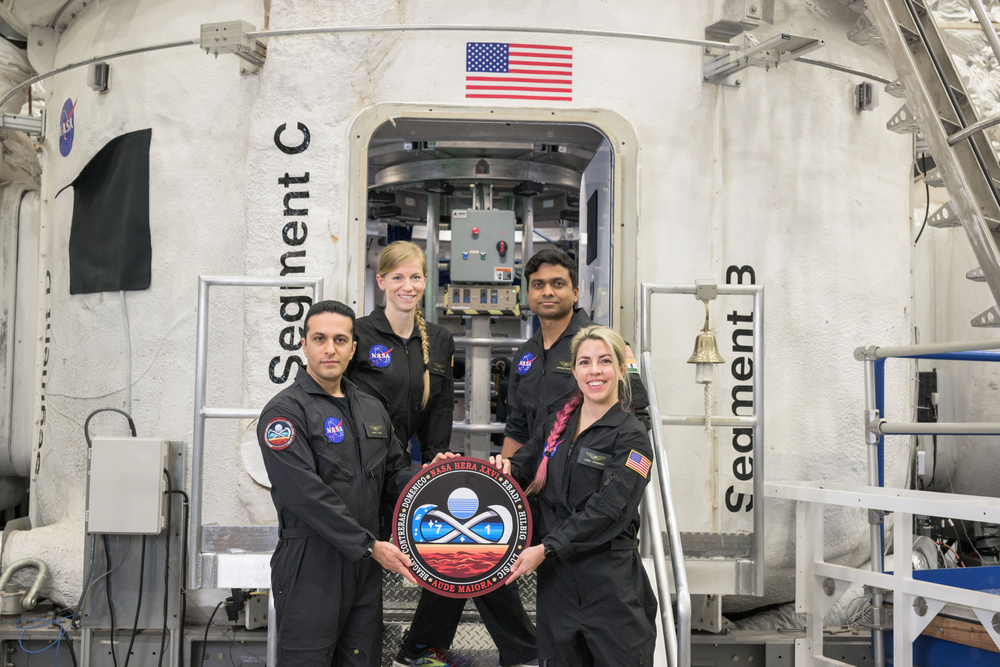HERA Campaign 7 Mission 1 Crew Sets Course for Ingress, Astronaut Health and Safety Research Ahead
Before astronauts can safely travel to Mars and beyond, NASA and its international partners have some critical questions to answer. To name a few: How will crews handle the communication delay with Earth? How will they work and live together in a small space over longer periods of time? How can they help advance scientific research?
At the Johnson Space Center, researchers are on a quest to gather data and test procedures for future human spaceflight missions. HERA (Human Exploration Research Analog), an integral part of NASA’s Human Research Program, or HRP, is one way the agency is working to understand the psychological, physiological, and social effects of extended isolation while providing a testing ground for experiments that could be deployed in flight.

Credit: NASA
With the goal of traveling to Mars and beyond, HRP is using the analog environment to enable cutting-edge science. Simulations like HERA are instrumental in devising plans to support the health and well-being of astronauts during prolonged interplanetary voyages. HERA has facilitated numerous simulated space missions, allowing researchers to understand and address the challenges that astronauts may face during their journey beyond Earth’s orbit.
NASA selected a crew of four volunteers for the next simulated Mars mission inside the ground-based habitat. The Campaign 7, Mission 1 crew— Abhishek Bhagat, Kamak Ebadi, Susan Hilbig, and Carli Domenico—will enter HERA on Friday, Jan. 26, 2024, to live and work like astronauts for 45 days. Similar to astronauts, HERA candidates undergo an extended selection process before they are picked for the analog, including evaluations by psychologists and medical assessments.

Within the spaceship environment, crew members will perform various engineering, piloting tasks, and team dynamics exercises. They will also conduct scientific experiments that could be included on future missions to Mars. Their schedule will follow the typical 16-hour workday of astronauts aboard the International Space Station.
Supporting HERA missions are NASA’s HRP team members who work with crew members from the start of the selection process to the end of their mission. “Space exploration is a world goal that requires a collaborative effort,” said Veronica Hargis, who recruits volunteers for HERA. “HERA needs candidates who want to contribute to that greater goal.”
A committee carefully selects the crew members for every HERA mission, evaluating them based on a specific set of criteria. Mental, physical, and emotional well-being, educational history, and personality traits are all factored into the selection process to construct highly qualified, astronaut-like crews for successful HERA missions.
The selection process involves asking unexpected questions to help understand the candidates more deeply and find the right people for the mission. "It's really like building a puzzle and seeing what team is going to have a successful mission based on the campaign scenario and objectives," said Dr. Christina Johnson, HERA’s principal investigator. "For Campaign 7, a big aspect is cultural diversity. We are fitting together people who are really different from each other, as astronauts themselves come from various places and backgrounds."
Each HERA crew will participate in 18 human health studies throughout the simulated mission. Ten studies are new to HERA, including seven led by scientists outside the United States. These international studies are collaborations with the United Arab Emirates’ Mohammed Bin Rashid Space Centre and European Space Agency.
2292.png?generation=1705870252114704)
Credit: NASA
Once aboard, crew members are assigned hands-on tasks and monitored in the HERA Mission Control Center. The experiment support scientists and mission support specialists train the crew to follow the experiment protocol, handle the equipment, and do the science and operations in the facility. The HERA team engages in activities similar to those performed on the International Space Station, including simulated cargo transfers using the Canadarm, virtual spacewalks, lunar landing control, spacecraft maintenance, and sample evaluation.
The HERA habitat replicates maintenance tasks akin to those on the station, even emulating the visual interfaces and the white noise aboard the orbiting laboratory. The crew utilizes virtual reality headsets to replicate the Martian surface. The habitat also allows crew members to experience simulated Earth launch and landing through controlled shaking as well as large TV screens that serve as “windows” into space.
The HERA team provides the crews’ technical support and makes sure they are safe throughout the mission. “We are here to support the crew 24/7 and keep them as healthy, happy, and safe as possible,” said Dr. Johnson. “HERA offers a unique opportunity for people to test and challenge themselves on a personal growth level, but crew health and safety is always top priority.”
After egress, the HERA crew provides feedback on the science and tasks accomplished to improve future missions.
***
The NASA HRP Test Subject Screening group is accepting resumes for healthy, non-smoking volunteers, ages 30 to 55 for future missions. Volunteers will be compensated and must pass a physical and psychological assessment to qualify.
Volunteers who wish to become a part of HERA can apply at https://analogstudies.jsc.nasa.gov/
















